The Alps are still the biggest draw for UK mountain bikers looking for foreign climes in which to test their mettle each summer, but there’s another area, split down the middle by the French/Italian border, that needs your attention. Between Nice and Genoa the mountains drop straight into the sea, their sides littered with hot, dry, rocky and dusty trails that are the home turf of several downhill and enduro legends.
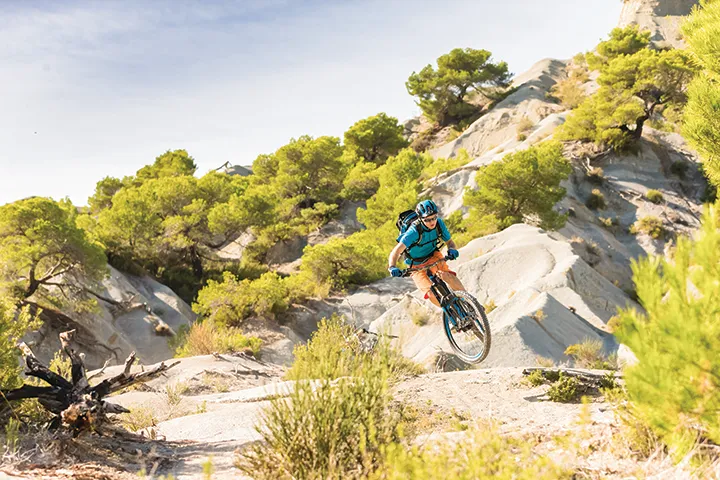
Take Peille, for example – a small village tucked away in the hills behind Nice that’s home to three world champions, all of who grew up on the same street! If that’s not enough, almost every area of the Maritime Alps is keen to attract more mountain bikers to its towns, so accommodation, transport and trails are all being primed for a well-deserved influx of riders. There are four spots in particular that we reckon are worth checking out.
Finale Ligure
If you’ve only heard of one riding destination in the area, it’s probably Finale Ligure. The small Italian town has played host to the final round of the Enduro World Series (EWS) since its inception in 2013, and prior to that was the location for many domestic SuperEnduro races. If you’re looking for a riding spot that typifies enduro riding and racing, then Finale is it.
Most riders will use one of the numerous uplift services, but that’s not to say there’s no pedalling involved. Finale’s trails are known for their fast and flowing nature, and are interspersed with technical sections, rather than just being full-on steeps (though you can find those too). With literally hundreds of miles of trails to explore, there’s a decent week’s riding from just this one town.
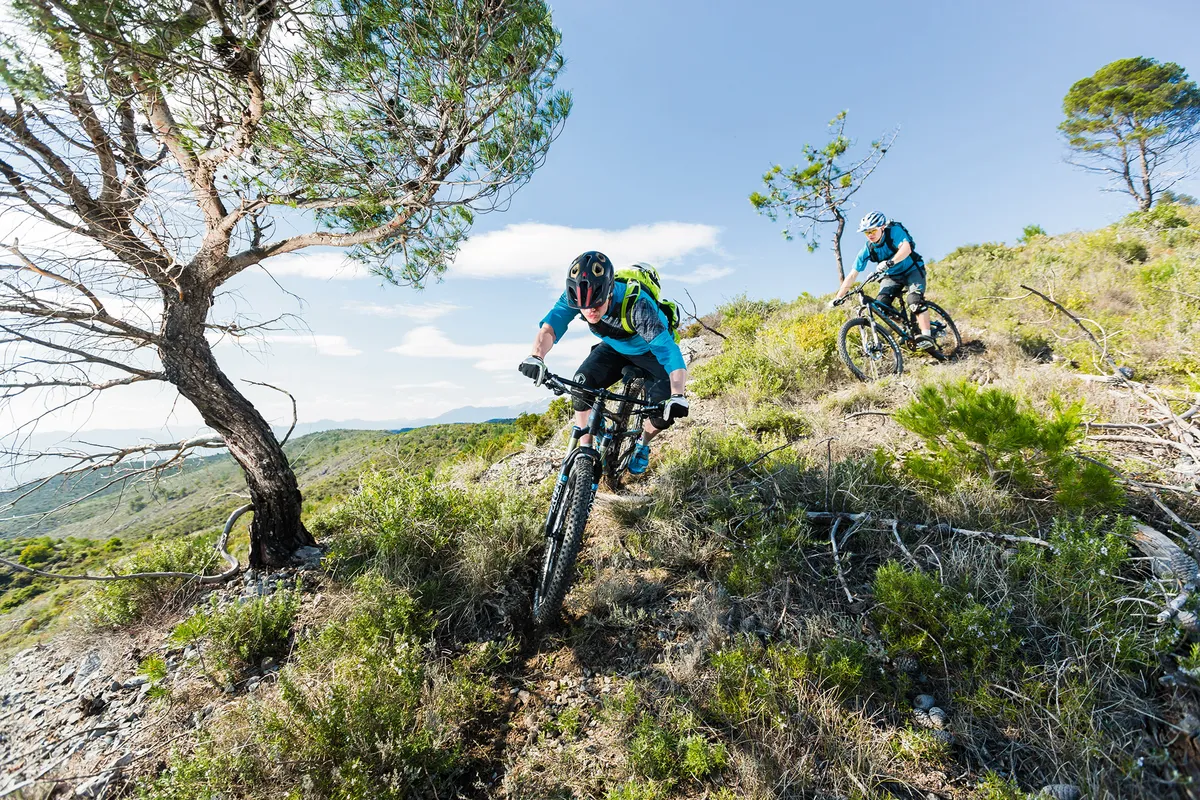
There’s plenty of descending to be done around the former NATO base, which sits at an altitude of just under 1,000m and has some of the best views in the region, out to the Mediterranean. Our favourite area, though, is the Manie Plateau, near the town of Varigotti. The terrain here is a little more open than it is further down the valley, so the views are difficult to beat, and the trails are a little wider and faster.
This means you can open the throttle and let rip, leaving clouds of dust behind you, before dropping down into town. There are three main downhill trails from here back to Finale – ‘DH Women’, ‘Briga’ and the more techy ‘DH Men’.
Sanremo
Midway between Finale and the French border is Sanremo, a smaller resort with an attitude that more than makes up for its size. The guys behind a lot of the trail work (www.sanremobikeresort.it) have put the blood, sweat and tears in to make it a riding spot well worth visiting.
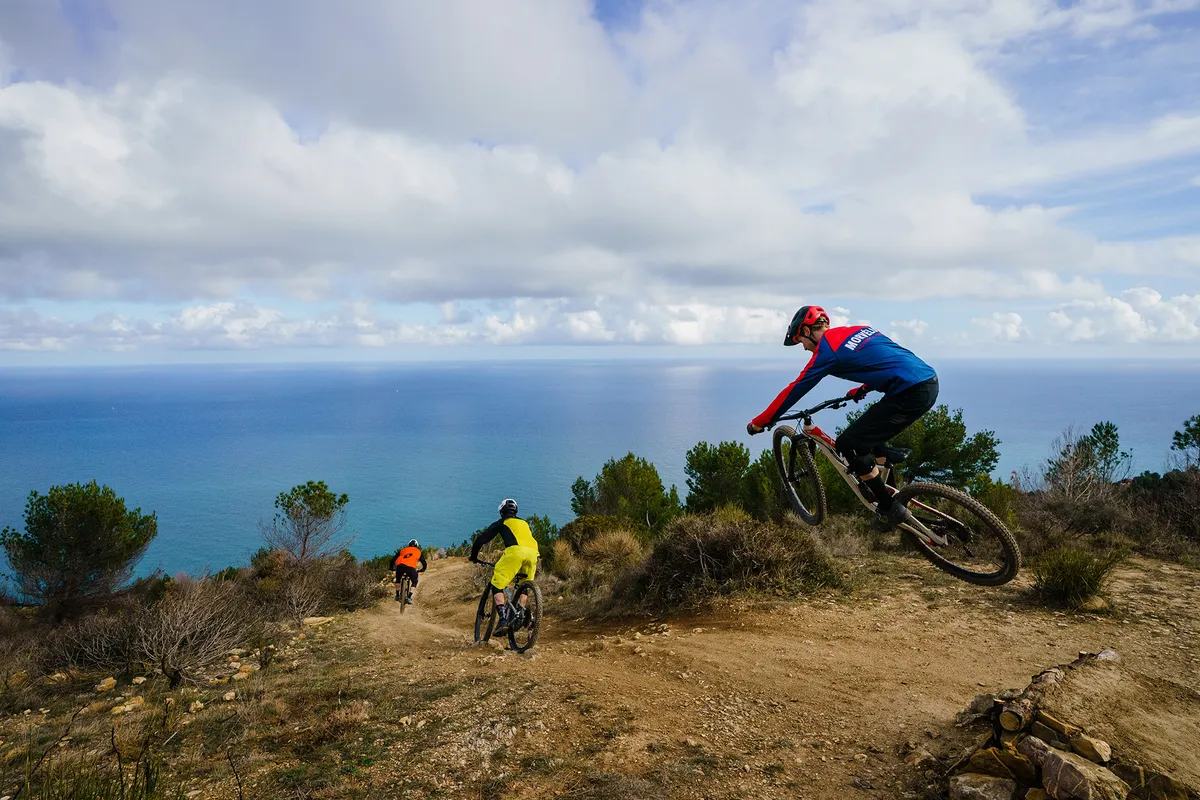
While Finale has a mix of trails, with a bias towards fast and flowy, Sanremo’s riding is steeper and more technical, with 20 official downhill and enduro tracks, which are marked on maps and signposted in places. Home to one of Italy’s first downhill courses, this place has racing pedigree.
With a much longer season than the Alps, we rode Sanremo in early spring, having just come out of a long winter of riding in the slop. To say it was an eye-opener would be an understatement.
Straight off the plane and into big rocks, deep dust, gnarled roots and punishing gradients, we all rode like shit on the first day while our brains readjusted to the technical insanity in front of us. But with the guys from Sanremo Bike Resort uplifting and guiding us for a few days we soon got our eye in, and were definitely glad of the long-travel enduro bikes we’d taken there.
While 160mm seemed to be the sweet spot for us, downhillers and trail riders should also find plenty to ride in the valleys.
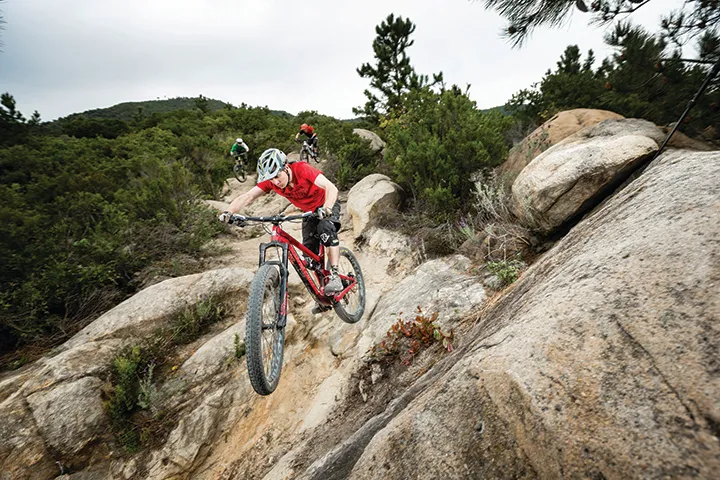
Peille
This picturesque village perched on a rock must have something in its water (which we’re thinking of bottling and flogging at a vastly inflated price) because it’s spawned not one but three world champions. Downhill (and later, enduro) stars Nicolas Vouilloz and Fabien Barel were born here, along with 1999 Junior XC champ Nicolas Filippi. Another DH champ, Löic Bruni, has been known to hang out in the area, and Filippi’s half brother is enduro racer Yoann Barelli. This is an area where mountain bike legends are made.
So what’s in it for you? Well, 335km of trails in the wider area should be more than enough to explore, even if you just stick to the 150km of signposted routes. If you’re hungry for more, a regular train service from Nice heads up towards Sospel (see below for more detail) and the Roya Valley, which offer even more great riding.

The trails are full of flow, but be wary of technical features along the way – their easiest stuff would be red-graded here in the UK, so take your knee pads with you. With a relatively large area to explore, it wouldn’t be a bad shout to get a local to show you around – www.activites.pleinenaturepeille.com offer guiding, shuttling and e-bike hire.
While enduro is definitely the main focus at the moment, the racing history of this French village goes back decades. The downhill track in town was raced from 1996 to 2009, and it’s back this year. Its name? The ‘DH of Champions’, of course.
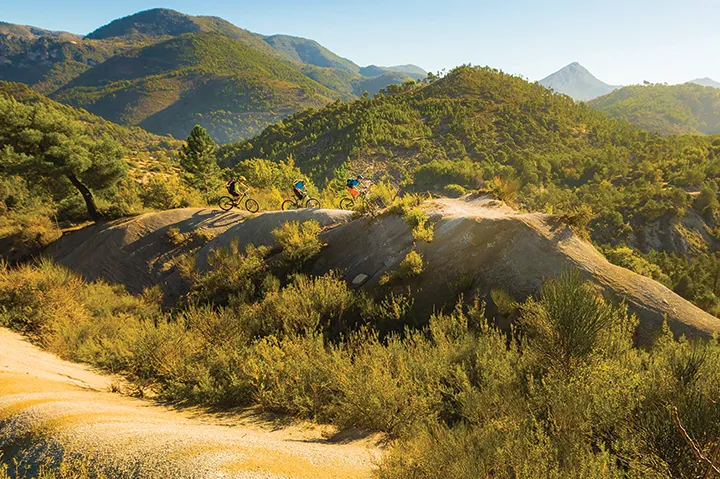
Sospel
Sospel sits a bit higher up in the mountains than the other spots here but is easily accessed from Nice by road or rail. The riding is a bit more chilled out than down in Peille, but the 160km of trails are well waymarked, making self-guiding a bit easier.
While the Italian coast gets brutally hot in summer, the higher reaches of Sospel are a bit friendlier. Still, despite their mountainous location, the trails are accessible year-round, and can easily be linked into the Peille network if you want a massive day out.
The area has a typical Maritime Alps feel, with sparse tree cover and bedrock pushing through the thin soil on the south side of the mountain, while there are more loamy forested trails on the northern side. Of all the locations here, Sospel has the most natural feel, with fewer obviously manmade features and trails. But fans of jumps and drops can still have a laugh in the bike park close to town.
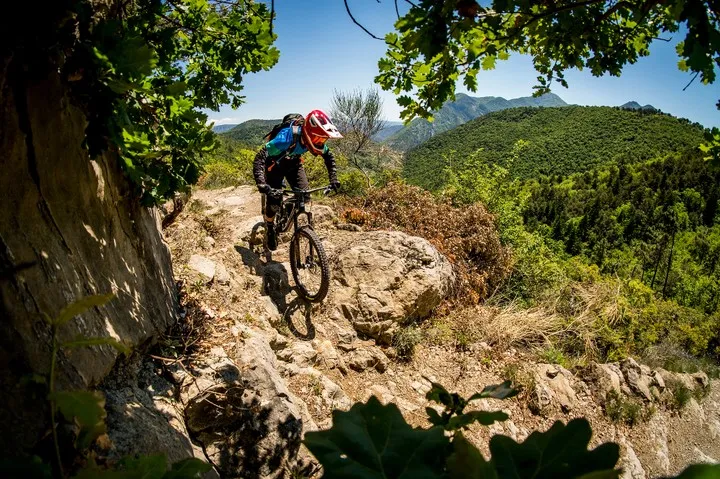
This is a place for fast-rolling yet grippy tyres that are able to take a beating. You should be able to get away with riding a regular trail bike here too – a 140mm-travel 650b/26in bike or even a decent 120mm 29er should be more than capable of tackling most of the trails.
If there’s one thing holding Sospel back, it’s that it can be a little sleepy, being off the beaten track. There aren’t masses of restaurants and bars in town, and they won’t always be open – an emergency stash of food wouldn’t be a bad shout if you’re thinking of visiting.
Plan your adventure
- Get your GCSE textbooks back out and learn a bit of the lingo. ‘Left’, ‘right’, ‘up’, ‘down’, ‘beer’, ‘ice cream’, ‘hello’ and ‘thanks’ should get you most of the way!
- Take a leaf out of the locals’ book and chill. You may be used to instant replies to your inquiries but life is a little more laidback in the sun.
- Pack your sun cream, even in winter. The highway down to the Côte d’Azur isn’t called the Autoroute du Soleil (Motorway of the Sun) for nothing!
- Take your swimmers. Nothing beats a dip in the Med after a day’s shredding.
- Work out what you want from your trip. If it’s shuttle riding, then research uplift operators/holiday packages. Some of the resorts are well served, while others require more self-reliance.
Getting there
Travelling to the Ligurian Coast (the Italian bit) or Côte d’Azur (French) is most commonly done by flying to Nice. From here, even Finale can be reached in a couple of hours, via a train from the airport or a hire car (check it’s valid to drive into Italy).
Most motorways in France and Italy have tolls, so don’t forget some change or your credit/debit card. There’s also the option to fly to Genoa, in north-west Italy, if those flights work better for you. Be aware that working out train timetables can be tricky in Italy, as the various operators don’t always talk to each other very well.
Tools for the job
Most modern MTBs should be up to the task, but if you’ve got the option, plump for a longish-travel enduro bike. The hills are big and rocky, so 140-160mm of squish is of real benefit. While there are uplift services, you’ll still be required to do a bit of climbing, so a bike that’s not scared of the odd hill is best.
Wide rims and beefy tyres will help shrug off the hits, especially when run tubeless to avoid snakebites. Knee pads are almost obligatory, and if you wear elbow or back protection at bike parks, take that too. Full-face helmets can be a bit sweaty but a convertible lid is a good option, or at least an open-face with extra coverage. Go for goggles if you like the enduro look!
-------------------------------------------------------------------------------------------------------
This article originally appeared in issue 340. You can find back issues of MBUK here.